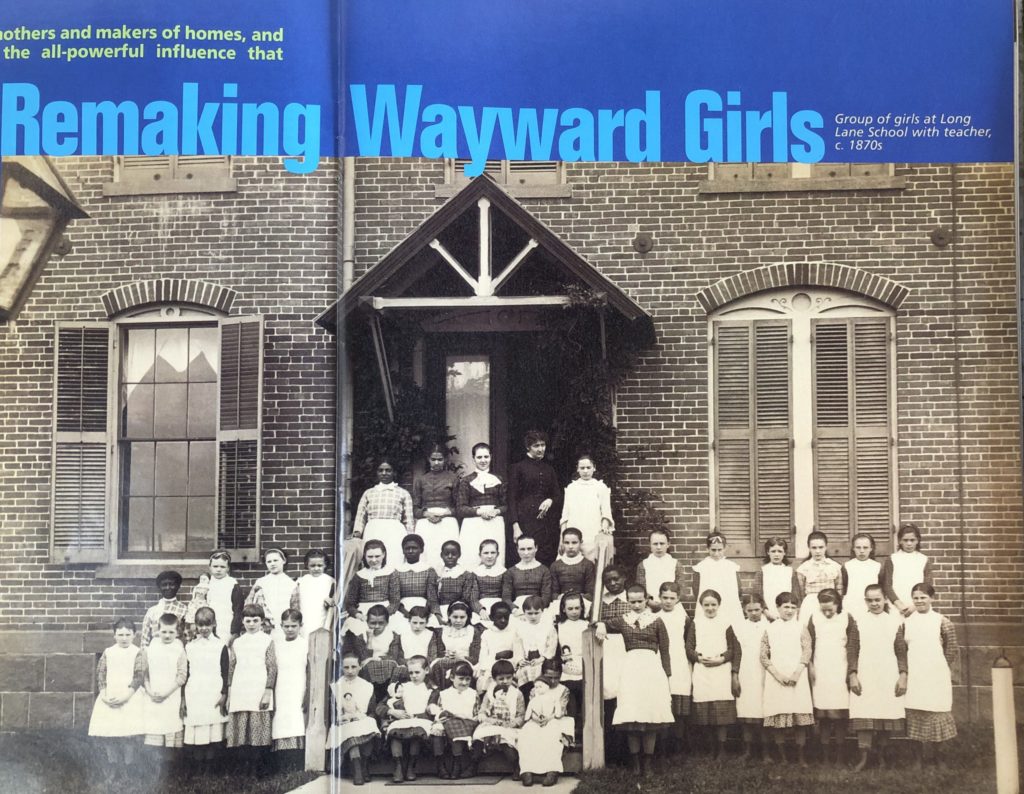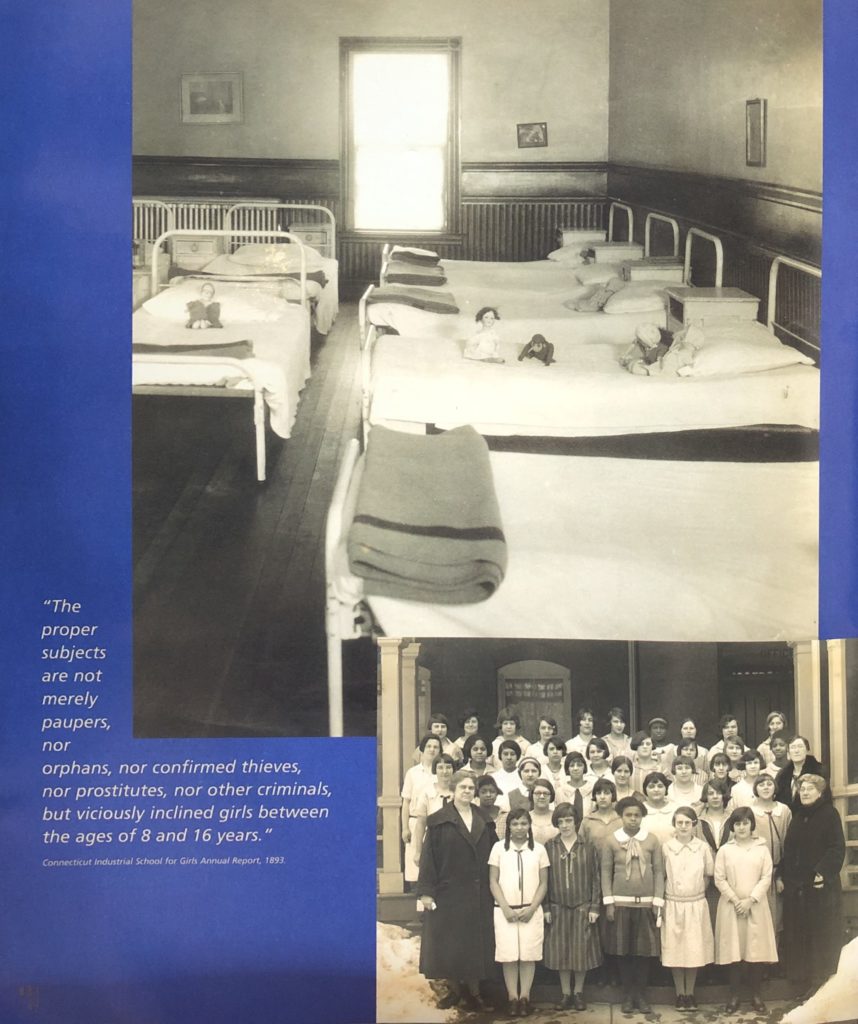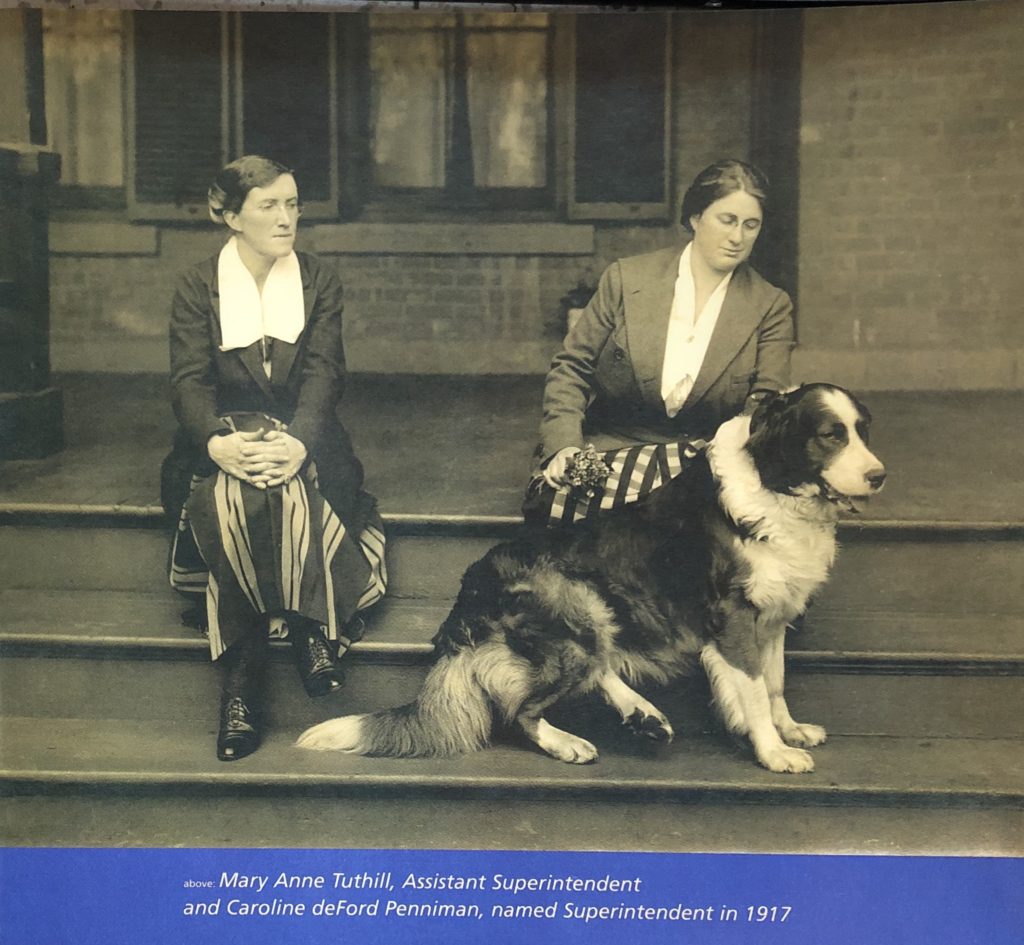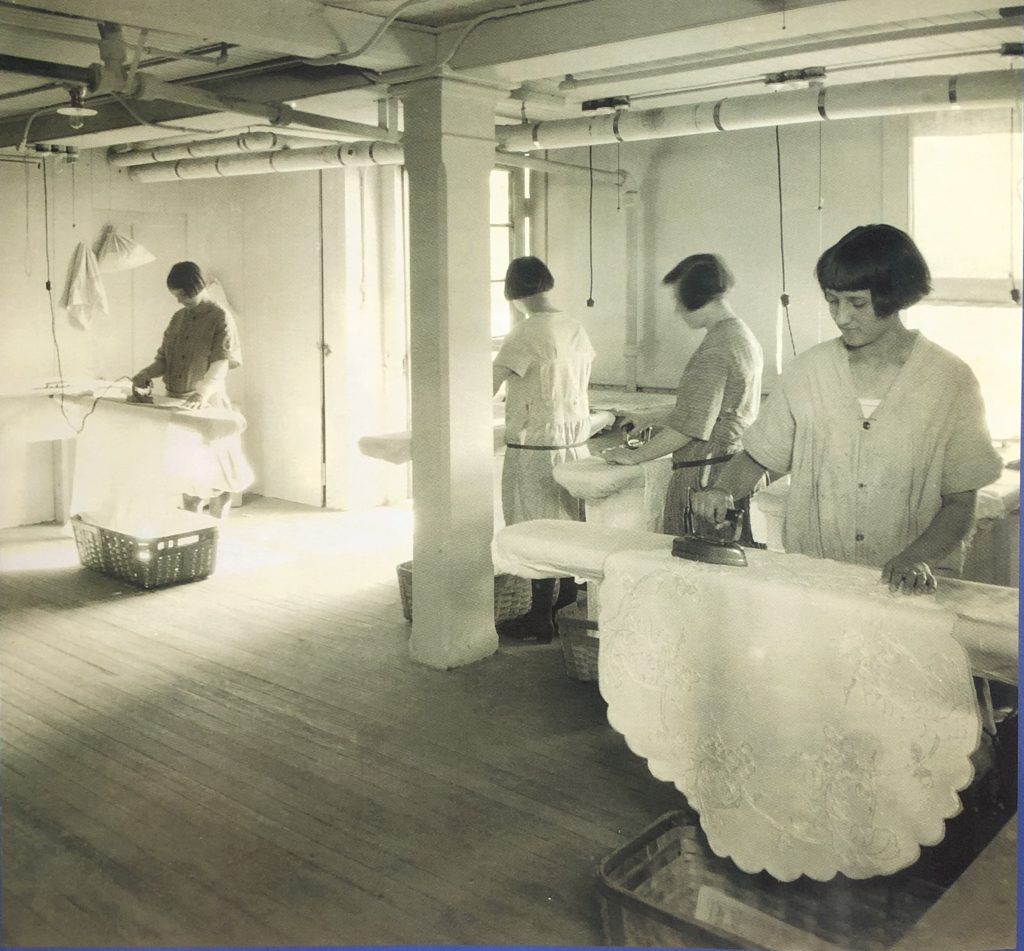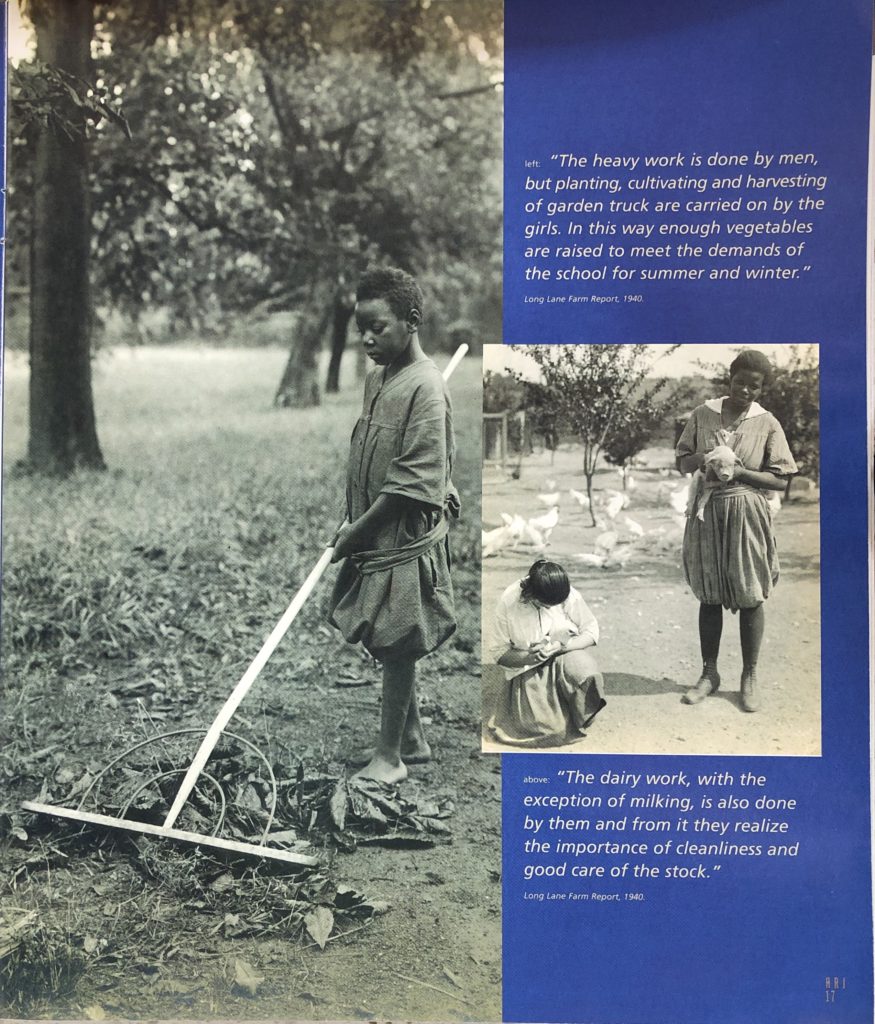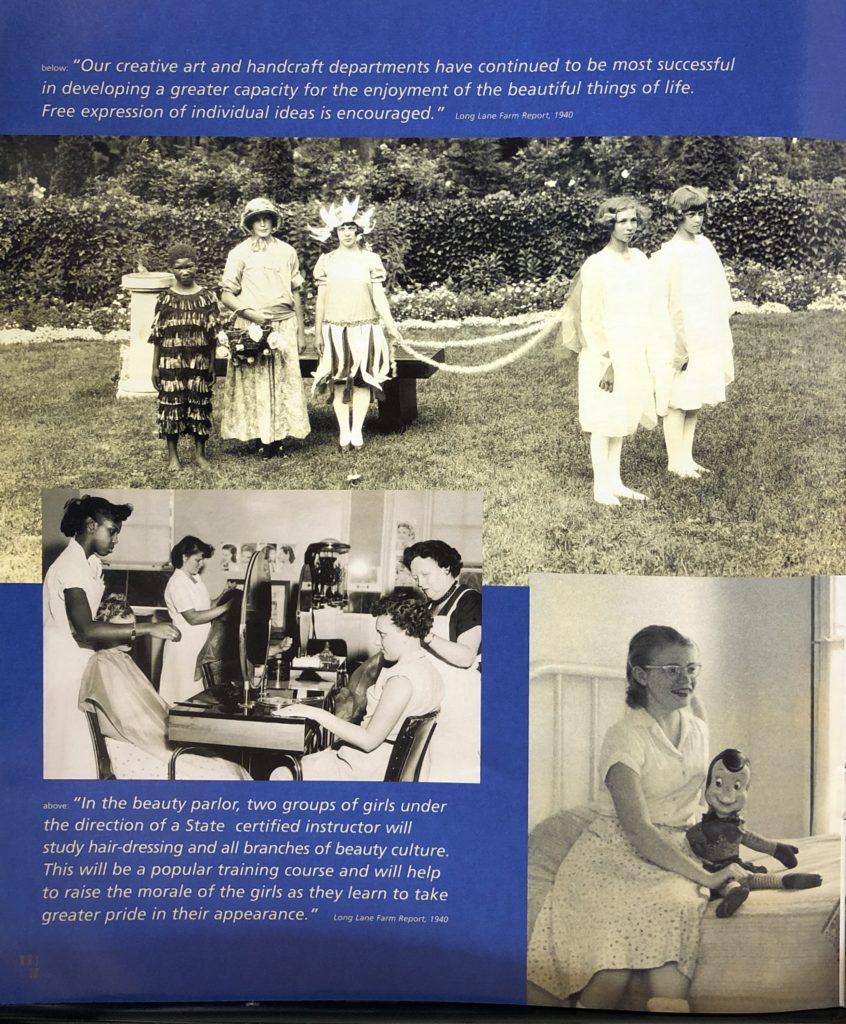By Mark H. Jones and Nancy O. Albert
(c) Connecticut Explored Inc. Summer 2003
Subscribe/Buy the Issue!
“Girls are to be the future mothers and makers of homes, and the home in our land is the all-powerful influence that guides, directs, fortifies and protects the Community, State, and Nation,” the 1900 Annual Report of the Long Lane School for Girls pronounced. Remaking wayward girls was, therefore, the most important work of Long Lane from 1869 until it closed earlier this year.
The following photos and excerpts from Long Lane School annual reports, which are in the collection of the Connecticut State Library, illustrate an evolving philosophy regarding the transformation of young charges into responsible citizens. The Connecticut Industrial School for Girls at Long Lane in Middletown opened as a reformatory. In 1921 it became a juvenile detention center as part of the new Connecticut Juvenile Justice System. In 1973 male juvenile officers were transferred there from the Meriden School for Boys after the Department of Children and Families was created and took over the two schools. After years of problems, the last two inmates, both girls, were transferred out of Long Lane on February 28, 2003. The facility officially ceased operating the next day. Wesleyan University, which bought the property from the State of Connecticut in 2000, will determine its future.
“The proper subjects are not merely paupers, nor orphans, nor confirmed thieves, nor prostitutes, nor other criminals, but viciously inclined girls between the ages of 8 and 16 years.” -Connecticut Industrial School for Girls Annual Report, 1893.
“The system of discipline and education is specially adjusted to the condition and wants of the girls. It aims to be as nearly as possible that of a well-regulated, Christian Family. Its culture is physical, sanitary, educational, industrial, and truly Christian, but not sectarian.” -Connecticut Industrial School for Girls Annual Report, 1826.
“About two months is spent in the central laundry. In this department the girls are taught to use a mangle…to run a hand press and finally to do the hand ironing…Laundry work is inspected regularly and when done acceptably, a girl is allowed to graduate.”- Long Lane Farm Report, 1936.
“The heavy work is done by men, but planting, cultivating and harvesting of garden truck are carried on by the girls. In this way enough vegetables are raised to meet the demands of the school for summer and winter.” – Long Lane Farm Report, 1940.
“The dairy work, with the exception of milking, is also done by them and from it they realize the importance of cleanliness and good care of the stock.” – Long Lane Farm Report, 1940.
“Our creative art and handcraft departments have continued to be the most successful in developing a greater capacity for the enjoyment of the beautiful things of life.” – Long Lane Farm Report, 1940.
“In the beauty parlor, two groups of girls under the direction of a State certified instructor will study hair-dressing and all branches of beauty culture. This will be a popular training course and will help to raise the morale of the girls as they learn to take greater pride in their appearance.” – Long Lane Farm Report, 1940.
“During the past year, 89 girls were admitted…The range in age at the time of commitment was from 12-16…By the time these youngsters reached us the roots of their maladjustment were deeply embedded in personality and character…Our job has been to help these children remold their lives–change their attitudes, discover latent abilities which previous unfortunate experiences had stunted–and make the transition back to community life.” – Superintendent Ethel D. Mecum quoted in the 1957-58 Long Lane School Report.
Mark Jones was the Connecticut State Archivist and a member of the CT Explored editorial team. Nancy O. Albert was the photo editor of Hog River Journal (now Connecticut Explored.)
Explore!
Read more stories about Childhood in Connecticut history HERE.
“Child Labor Strike in New Britain: ‘They Will Undoubtedly Win It'”, Winter 2019-2020

